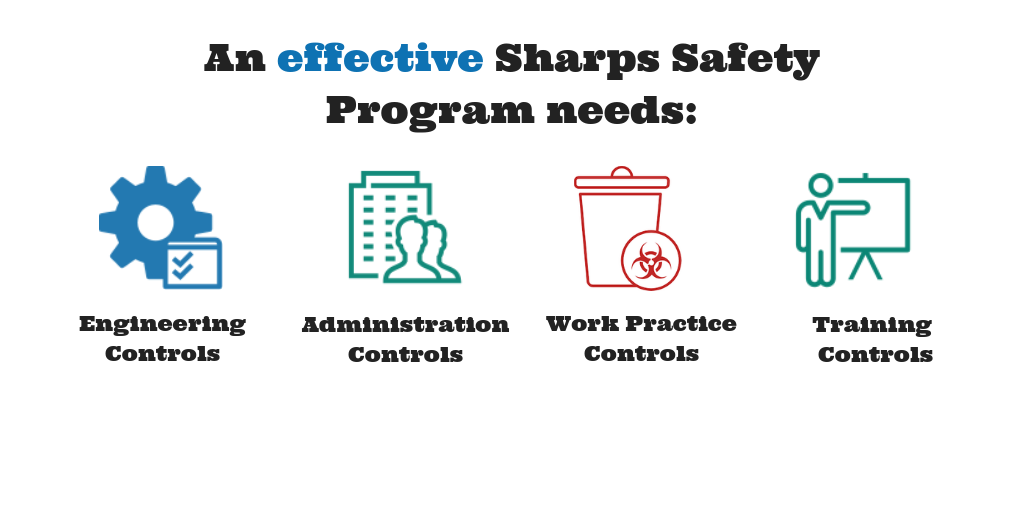Is Your Sharps Safety Program Effective?
There is always the risk that a sharps injury will lead to a blood-borne infection and other consequences. Because of this, workplaces which use sharps such as scalpels and needles (including hospitals, aged care facilities, aesthetician clinics) need to make sure that a sharps safety program is in place. To make sure that your sharps safety program is effective, it should include the following controls of risk.
Engineering controls:
- Sharps disposal containers should be adequately purchased and easily accessible
- Use safety-engineered devices during all procedures and treatments (eg. Scalpel blade removers and retractable syringes)
- All sharps disposal systems must conform to your local standard. For example, the Australian Standard AS 4031-1992
- Make sure that there is good lighting and adequate space to carry out all procedures or treatments
Administrative controls
- Staff should be made well aware of your health and safety responsibilities and policies
- In hospitals, a sharps injury prevention committee is highly recommended
- Your sharps policy needs to cover prevention, exposure, treatment and follow-ups. This should also be referenced in your infection control policy
- Unsafe devices must be removed
- Promote a no-blame culture, which has proven to encourage staff to follow policy practices
- Implement vaccination programmes (eg. free hepatitis B vaccination)
Work Practice controls
- Maintain neutral sharps safety zones
- Enforcing a hands-free passing technique
- Practice clear communication, especially when passing a sharp
- Place sharps containers at eye level and within arm’s reach of where procedures or treatments take place
- Make sure that workers use personal protective equipment
Training controls
- Ensure that training is provided on induction, as well as providing annual sharps safety education
- Medical devices should be demonstrated to the staff to make sure that staff are comfortable with using the device
- Staff should be trained in the reporting, response and monitoring procedures in case of a sharps injury
Other controls
- Each sharps injury in should be investigated, and the root causes of the incident analysed
- Reports of incidents and the investigation should include staff feedback and be sent to staff
- All control measures should be regularly reviewed, including the implementation rate by staff
- Medical devices should be reviewed regularly, to identify if there are safer devices available
Remember, suppliers who care about staff safety like Qlicksmart will provide you with support, information, and training to help your Sharps Safety Program succeed.

References:
Centres for Disease, Control and Prevention. (2015). Sharps Safety for Healthcare Settings. USA. http://www.cdc.gov/sharpssafety/
Royal College of Nursing (2013). RCN Guidance to support the implementation of The Health and Safety (Sharp Instruments in Healthcare Regulations) 2013. United Kingdom. http://www.gla.ac.uk/media/media_511552_en.pdf
Queensland Health (2017). Developing a sharps safety program. Australia. http://www.health.qld.gov.au/clinical-practice/guidelines-procedures/diseases-infection/infection-prevention/standard-precautions/sharps-safety/sharp-safety-program

